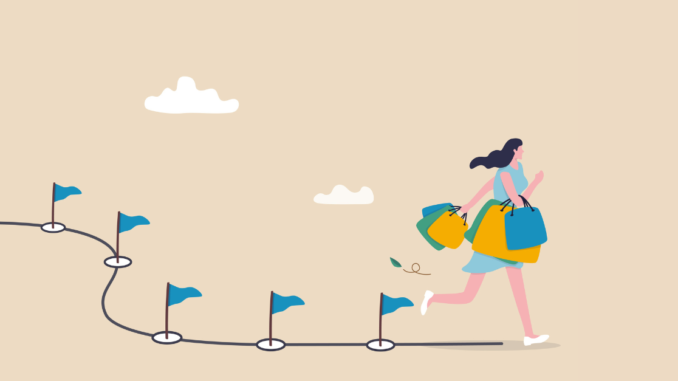
Mapping out and understanding the stages of your customer’s journey is a key aspect of creating a successful marketing strategy. This is essential because this journey represents the path that someone takes from their initial introduction to a brand to when they become a loyal advocate. Having a clear view of this can help you tailor your engagement efforts at each stage to better resonate with your customer and ultimately, lead to higher conversion rates.
For example, consider an ecommerce company that sells meal kit subscriptions. By analyzing the customer journey, they can create targeted ads and specific content that educates the customer before putting them in a nurture with increasing discounts. When the customer converts, they offer early access to new recipes and exclusive content in collaboration with well-known chefs. This strategy not only leads to revenue but also retention and loyalty.
The Five Customer Journey Stages
The customer journey is divided into distinct phases and can vary a bit depending on who you talk to. The most common stages are Awareness, Consideration, Conversion, Loyalty, and Advocacy.
Awareness Stage
The awareness stage is the initial phase of the customer journey. You’re working on capturing the attention of audiences that aren’t aware of your brand and reinforcing recognition. This is a crucial stage because it sets the tone and builds the foundation for what your customers think and know about you.
Building trust and increasing brand exposure is the priority here and to do so, there are several marketing tactics you should employ. Social media, SEO, and paid media are all useful marketing strategies to utilize. These channels focus on optimizing and expanding reach while also sharing informative content and fostering brand awareness.
If you’re struggling to find your next steps, consider strategies that help you find and engage customers. This could include:
Finally, like all marketing strategies, this stage takes some trial and error to get right. To address any weaknesses in this stage, consider revisiting the following:
Consideration Stage
The consideration stage is the next step and is the critical phase when the decision-making is occurring. At this point, your customers know who you are and what you offer. Now, they’re working actively to weigh their options and consider whether you are the one to go to for their needs.
While potential customers are narrowing in their choices and conducting research to determine which solution is the right fit, it’s important to engage with them. The strategies you use here could make or break the sale. Some effective marketing tactics to use in this stage include:
There’s a lot that goes on during this stage. To ensure that your strategies are effective, you’ll need to focus on your audience and your content. We recommend:
Convert Stage
The conversion stage directly ties in with the sales portion of the process and is the pivotal point we’ve been working towards. Your customer has moved beyond awareness and consideration and is ready to make a move.
So how do we get them to take action swiftly? Sometimes, this is completely dependent on the customer’s unique situation. Maybe they’re waiting for a final go ahead from a superior or the start of a new quarter so they have a fresh budget—these are factors we can’t influence. However, there are some ways we can nudge them in the right direction if they’re ready, like:
Like the previous stages, there are always improvements that can fill the gaps. There are a variety of weaknesses that can affect the conversion stage. A few include:
Loyalty Stage
The work isn’t over just because we’ve made it over the conversion hump. This is the first post-sale part of the customer journey. The focus here evolves into building lasting relationships.
To foster loyalty and encourage advocacy, consider implementing these marketing tactics:
Satisfied customers can become loyal advocates if the right strategies are used. These are people that will continue to not only support your business but actively promote it as well. Building a community and offering exceptional customer service makes a big difference here. However, there are additional areas you can target:
Advocacy Stage
This is the final stage of the customer journey and the most rewarding aspect of the post-sale journey. At this point, you’ve gained a satisfied customer and a loyal advocate. This is a highly valuable relationship because you have a customer that makes repeat purchases, engages with your brand, and is passionate enough to promote your business to others.
While the marketing work may seem complete, there is always more to be done to keep customers engaged and happy. To cultivate advocates we recommend:
There are aspects of this stage that you can improve. You can transform loyal customers into strong advocates by keeping tabs on the following:
Understanding and leveraging the customer journey stages are essential for content marketing and business success. Each stage of the journey requires a tailored approach that focuses on specific tactics and strategies. By fully utilizing the customer journey, you can create a seamless pathway that works for your brand and your customers.

Leave a Reply